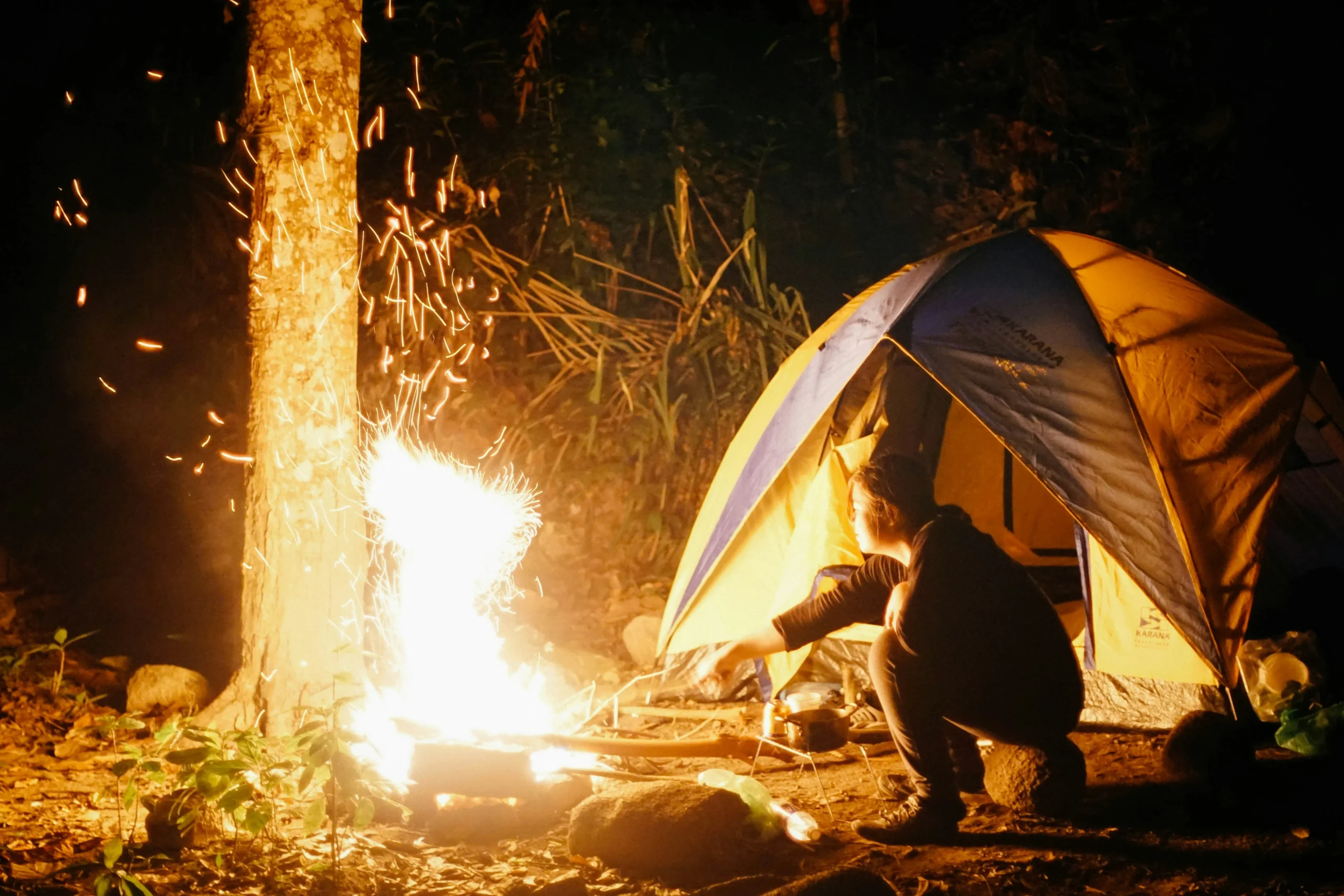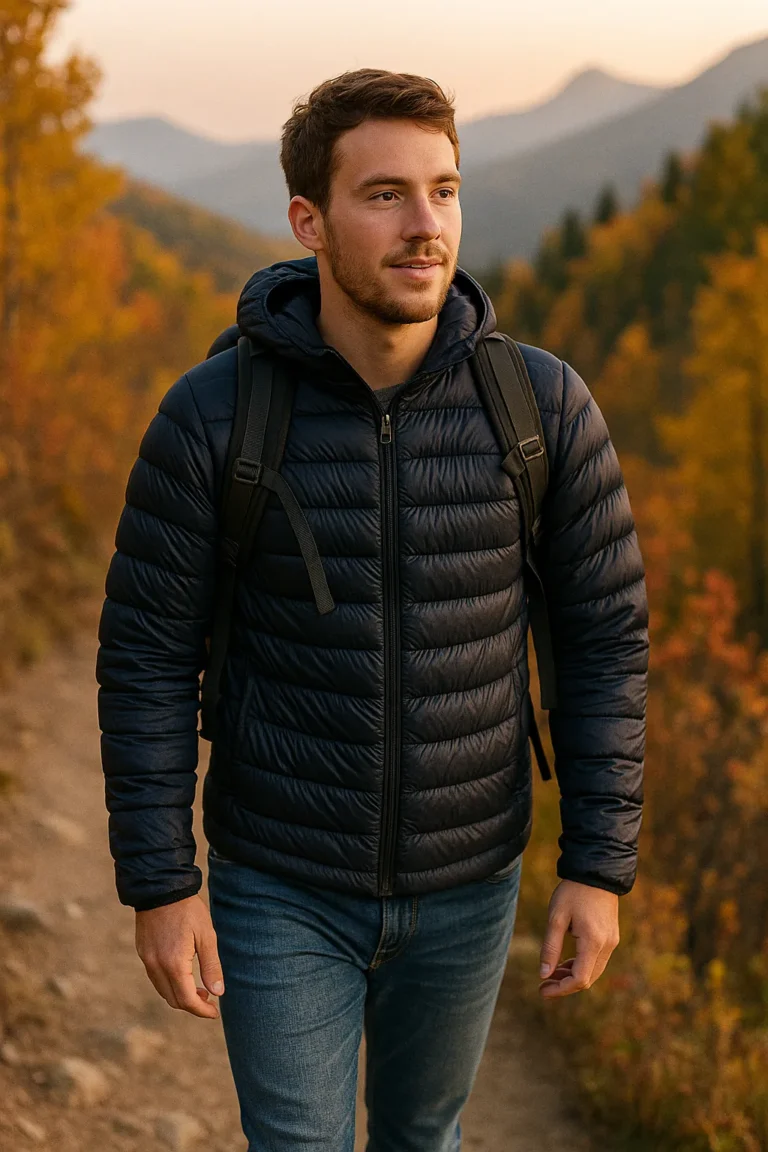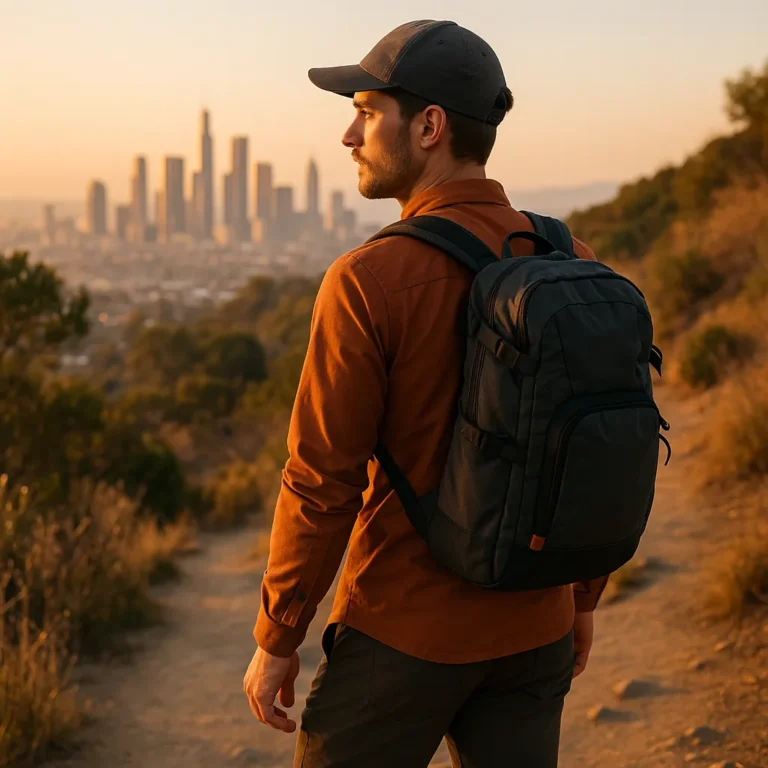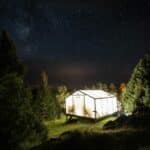Introduction
Whether you’re cooking dinner, warming up in the cold, or just enjoying a quiet night under the stars, the success of your camping trip often depends on one key thing: being able to start a fire—reliably, in any condition.
That’s why choosing the right firestarter for camping matters so much. From classic matches to high-tech arc lighters, each tool has distinct strengths and weaknesses depending on your environment, fuel type, and personal skill level.
In this comprehensive guide, we’ll break down the 7 most effective firestarter types for camping and show you how to choose the perfect option (or combination) that best fits your gear, location, and experience level.
Types of Camping Firestarters Compared
Before diving into the details, here’s a quick comparison of the most popular firestarters for camping to help you understand their key differences:
| Firestarter Type | Reliable When Wet | Wind Resistant | Skill Level | Reusability | Best For |
|---|---|---|---|---|---|
| Matches | No | Low | Beginner | No | Emergencies, dry conditions |
| Lighters | Sometimes | Medium | Beginner | Yes | General camping, everyday use |
| Ferro Rods | Yes | High | Moderate | Yes (thousands of strikes) | Survival, wet/windy conditions |
| Magnesium Blocks | Yes | High | Moderate | Yes | Cold, wet, or high-altitude use |
| Arc Lighters | Yes | High (windproof) | Beginner | Yes (USB rechargeable) | Modern kits, backup gear |
| Firestarter Cubes | Yes | High | Beginner | No | Starting wet wood, quick ignition |
| Natural Tinders | No (unless dried) | Low–Medium | Moderate | No | Practice, primitive skills |
Let’s examine each type in detail to help you find the perfect firestarter for your next camping trip.
Best Matches for Camping: Weather Limitations & Uses
Simple, lightweight, and inexpensive, matches are a traditional firestarter—but also the most vulnerable to wind and moisture. Strike-anywhere matches offer more convenience, but most camping matches are safety-style and require a specific striker surface.
Real-World Performance & User Experience
Matches are typically used as a backup firestarter, not a primary tool. Experienced campers report that even waterproof matches can fail if stored improperly. However, when kept in a dry, sealed case, they work reliably—especially for lighting tinder or pre-staged fire lays.
Pros
- Ultralight weight and inexpensive
- Easy to use, no learning curve
- Waterproof options available (e.g., UCO Stormproof Matches)
Cons
- One-time use only
- Very sensitive to wind and wet conditions
- Need proper storage to maintain effectiveness
Related: Check our Solo Camping Checklist: What to Pack and How to Stay Safe for essential emergency gear recommendations.

Camping Lighters: Reliability in Different Conditions
From disposable Bics to refillable butane models, camping lighters remain popular for a reason: they’re fast, familiar, and widely available.
Real-World Performance & User Experience
Many campers rely on a basic Bic as their go-to firestarter. It’s reliable in dry to moderate conditions and works well with paper, firestarter cubes, or kindling. Reviewers particularly appreciate their one-handed operation, ease of replacement, and affordable price.
However, traditional lighters can fail in high wind or freezing temperatures, and their fuel depletes over time, especially at higher elevations.
Pros
- Easy and familiar to use for most people
- Lightweight with refillable options available
- Works well with most tinder types
Cons
- Performance degrades in wind and cold temperatures
- Can leak or run out of fuel unexpectedly
- Not ideal as your only firestarter in harsh conditions
Ferro Rods (Firesteels): The All-Weather Camping Firestarter
Ferrocerium rods create a shower of hot sparks (around 3,000°F/1,650°C) when scraped with a steel striker—and they work even when wet. With proper technique, they’re among the most reliable firestarters in wilderness settings.
Real-World Performance & User Experience
Outdoor enthusiasts and survival experts consistently rate ferro rods highest for durability and performance in tough conditions. They typically last for thousands of strikes, work at any altitude or temperature, and can ignite dry tinder or fire cubes easily.
Some users mention the learning curve—it takes proper technique and patience to get a spark to catch and develop into a flame. They’re not ideal with damp, unprepared materials unless paired with quality tinder.
Pros
- Functions perfectly when wet and in windy conditions
- Provides thousands of strikes per rod
- Extremely durable and compact to pack
Cons
- Requires proper tinder preparation and technique
- Not immediately intuitive for beginners
- Produces sparks rather than a direct flame
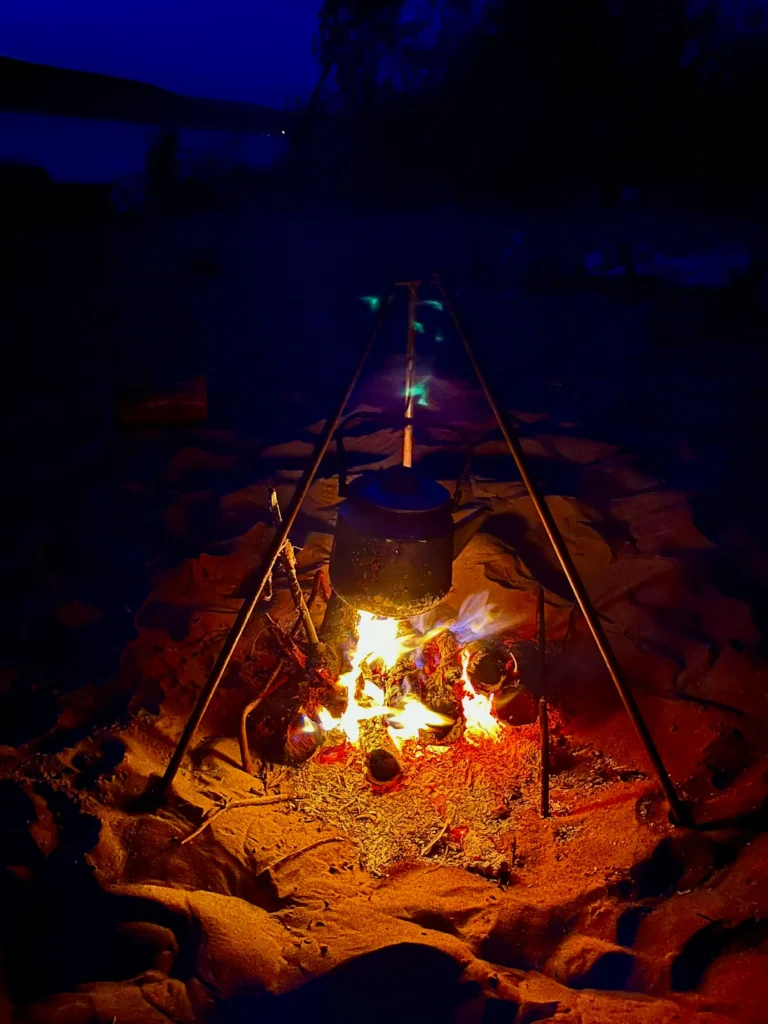
Magnesium Block Firestarters: Best for Cold and Wet Environments
Magnesium firestarters combine a block of highly flammable magnesium with an attached ferro rod. You shave the magnesium into a small pile, then ignite it with the ferro rod—producing an intense, brief flame that can ignite even damp materials.
Real-World Performance & User Experience
Backpackers and survivalists particularly value magnesium blocks in cold, wet, or high-altitude environments where standard tinder fails. The magnesium burns at over 5,000°F (2,760°C), capable of lighting even stubborn or damp kindling.
However, users consistently note that it’s messier and slower than other options. Shaving magnesium requires time and patience, and in windy conditions, the shavings can blow away if you’re not careful.
Pros
- Burns extremely hot—capable of igniting wet tinder
- Functions reliably in rain, strong wind, and cold
- Includes integrated ferro rod for generating sparks
Cons
- Requires more setup time than other methods
- Needs careful scraping and preparation
- Slightly bulkier than standalone ferro rods
Electric Arc Lighters: Modern Firestarters for Tech-Savvy Campers
Arc lighters use plasma electricity to ignite materials without an actual flame or liquid fuel. Most models are rechargeable via USB, completely windproof, and highly portable.
Real-World Performance & User Experience
Campers who prefer modern, low-maintenance gear tend to favor arc lighters. They excel at lighting paper, fire starter cubes, or even camp stoves—and function perfectly at high altitude or in windy conditions.
Users appreciate that they’re rechargeable and environmentally friendly, but commonly warn they only work effectively with fine, dry tinder—they won’t directly ignite sticks or coarse natural material. They perform best when paired with a starter cube or paper.
Pros
- USB rechargeable, no fuel required
- Completely windproof and safe to pack
- Long-lasting with simple one-button operation
Cons
- Limited effectiveness with natural tinders
- Requires access to power for recharging
- Less rugged than mechanical firestarters
Need lighting for your campsite? Check our guide to the Best Camping Flashlights with Long Battery Life that pair perfectly with modern firestarters.
Firestarter Cubes & Commercial Tinders: Fire Insurance in a Package
Commercial firestarters (including wax cubes, petroleum-soaked cotton, or solid fuel tablets) provide consistent ignition and extended burn time. They’re specifically designed to catch flame easily and help ignite damp wood or stubborn logs.
Real-World Performance & User Experience
Serious backpackers often carry these as fire insurance. A single small cube can burn for 5–10 minutes, providing ample time to catch larger fuel. They work effectively with almost any ignition method—matches, lighters, or ferro rods.
These products add minimal weight to your pack, and users consistently praise their ease of use and reliability, particularly in challenging wet environments.
Pros
- Extended burn time, even in wet conditions
- Compatible with any firestarter tool
- Compact and lightweight to carry
Cons
- Single-use consumable item
- Some varieties have a petroleum odor
- Can melt in extreme heat if not stored properly
Natural Tinders for Camping: Finding Fire Starters in the Wild
Found tinders like birch bark, fatwood (resin-rich pine), dried grass, pine needles, or punk wood can be collected in the field—but require skill and patience to use effectively.
Real-World Performance & User Experience
Survivalists and bushcraft enthusiasts enjoy using natural tinders for skill development and self-reliance. Fatwood and birch bark are particularly valued due to their high resin content, which ignites quickly and burns hot.
However, in wet environments or emergency situations, relying solely on natural materials can be risky unless you’re highly experienced and selective about what you gather.
Pros
- Free and readily available in many environments
- Develops valuable wilderness skills
- Can be highly effective when properly dried
Cons
- Availability varies widely by location
- Performance decreases significantly when damp
- Requires preparation, attention, and patience
How to Choose the Right Firestarter for Your Camping Trip
The best firestarter depends on your specific environment, experience level, and backup plan. Here’s what to consider:
Weather Conditions
Heading into a wet or windy area? Ferro rods, magnesium blocks, and arc lighters significantly outperform matches or standard butane lighters. For desert camping, almost any firestarter will work reliably.
Trip Duration
For longer backcountry expeditions, choose something reusable (ferro rod, arc lighter) or pack extra supplies if using disposable options.
Ease of Use vs. Reliability
Matches and lighters offer simplicity. Ferro rods and magnesium blocks require more skill but function consistently in harsh conditions. Consider your experience level and comfort with different techniques.
Available Fuel Types
If you’ll be gathering potentially damp sticks and logs, pair your firestarter with commercial cubes or carry fatwood for more reliable ignition. In dry environments, natural tinders may be sufficient.
Always Plan for Redundancy
Experienced campers consistently recommend carrying at least two different firestarting methods. Many pack both a lighter and a ferro rod—one for convenience, one for backup reliability.
Related: Learn proper packing techniques in our comprehensive guide How to Pack a Backpack: The Ultimate Guide for Hikers & Campers.
Common Mistakes When Starting a Campfire
Even the best firestarter won’t help if you make these common errors:
Relying on a Single Firestarter
Batteries die. Matches get wet. Tools break. Always carry multiple options for critical survival needs.
Using Inadequate Tinder
Even the most powerful firestarter can’t overcome soggy, thick, or green tinder. Take time to prepare a proper tinder bundle before attempting ignition.
Starting Too Large
Proper campfires build progressively: spark → tinder → kindling → fuel wood. Many beginners try to ignite large sticks directly, leading to frustration.
Ignoring Wind Direction
Wind rapidly dissipates heat. Position your body, gear, or natural barriers to block airflow while establishing your initial flame.
Skipping Practice at Home
Techniques that look simple in videos can prove challenging in adverse conditions. Practice with your chosen firestarter before relying on it in the backcountry.
Top Recommended Firestarters for 2025
Based on extensive testing across various weather conditions and environments, here are our top recommendations:
Best Overall Camping Firestarter: Light My Fire Swedish FireSteel 2.0
This ferro rod offers the perfect balance of reliability, durability, and ease of use. It works in virtually any weather condition and provides approximately 3,000 strikes. The included striker features an emergency whistle and ergonomic handle.
Best Budget Option: BIC Classic Lighter
Simple, reliable, and incredibly affordable. While not ideal in extreme conditions, a quality BIC lighter remains a camping essential that belongs in every outdoor kit.
Best for Wet Conditions: UCO Stormproof Match Kit
These specialized matches continue burning even when completely submerged in water. The waterproof case includes three striker surfaces and can store up to 25 matches.
Best Tech Option: Survival Frog Tesla Lighter X
This dual-arc plasma lighter is completely windproof, USB-rechargeable, and includes a built-in flashlight. Perfect for tech-savvy campers who appreciate modern solutions.
Most Versatile: Überleben Zünden Bushcraft Ferro Rod
Available in multiple sizes, this premium ferro rod includes a multi-tool striker and produces hotter, larger sparks than standard models. The traditional wood handle provides excellent grip in all conditions.
Frequently Asked Questions About Camping Firestarters
Can I bring firestarters on a plane?
Most firestarters are prohibited in carry-on luggage but allowed in checked bags. Specifically:
- Matches: Only one book of safety matches in carry-on (no strike-anywhere)
- Lighters: One standard lighter in carry-on (no torch lighters)
- Ferro rods: Allowed in both carry-on and checked bags
- Arc lighters: May be allowed in checked bags only (varies by airline) Always check current TSA regulations before flying.
How long does a ferro rod last?
A quality ferro rod typically provides 3,000-12,000 strikes depending on size and use technique. With proper use, a single rod can last many years of regular camping.
What’s the best firestarter for beginners?
Fire starter cubes paired with a standard lighter offer the most foolproof combination for beginners. As skills develop, consider adding a ferro rod to your kit for greater versatility.
Are firestarter cubes toxic?
Most commercial firestarter cubes are petroleum-based and should not be used to cook food directly. However, once your main fuel (wood) is burning, the food is safe to cook over the flame.
What natural firestarters can I find in the forest?
Look for birch bark, dry pine needles, dead standing wood (especially pine with resin), and dry grasses. These natural materials can be effective when properly prepared and kept dry.
Conclusion — Fire When You Need It Most
Fire remains one of the most essential tools in the wilderness—providing warmth, cooking capability, psychological comfort, and survival advantages. The key isn’t just having a firestarter; it’s having the right firestarter for your specific conditions and knowing how to use it effectively.
Whether you choose a traditional matchbook or a modern arc lighter, think in layers of redundancy: convenience + reliability + backup. Combine a fast option (like a lighter) with a durable one (like a ferro rod), and always bring dependable tinder.
With the right firestarting system and proper technique, you’re never more than a few moments away from the comfort and security of a well-made campfire—regardless of what nature throws your way.
Want to be prepared for any camping emergency? Check out our guide on How to Create an Emergency Go-Bag that includes essential fire-starting supplies.
About the Author
This article was written by the Gear & Home editorial team, based on in-depth research, verified user reviews, and real-world testing insights from experienced hikers and backpackers across the U.S.
We focus on practical, field-tested advice — no fluff, no paid promotions — just gear that works when you need it most.


